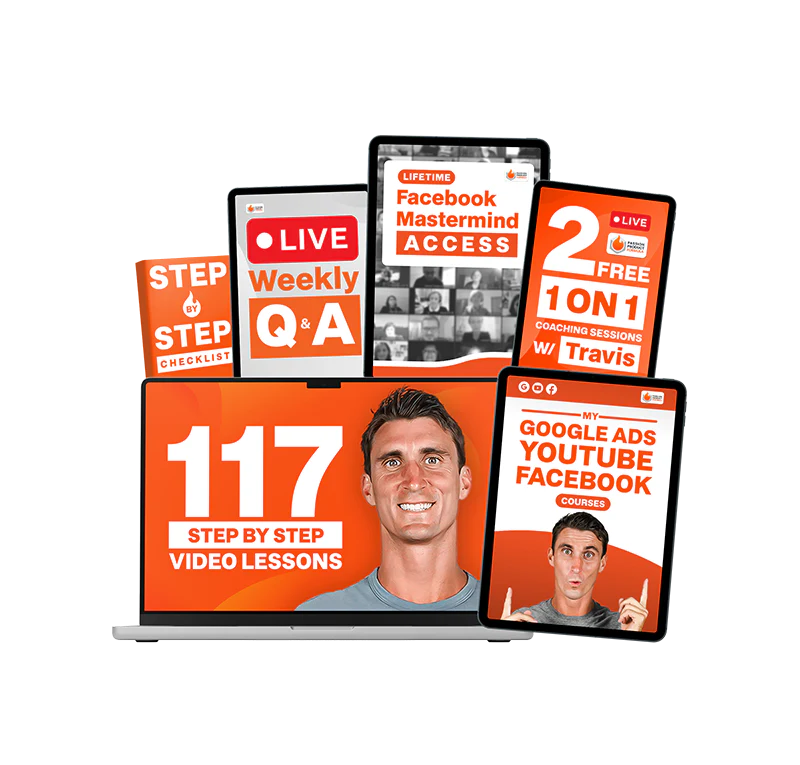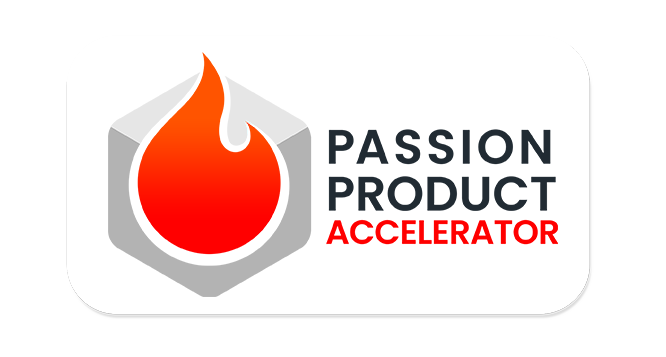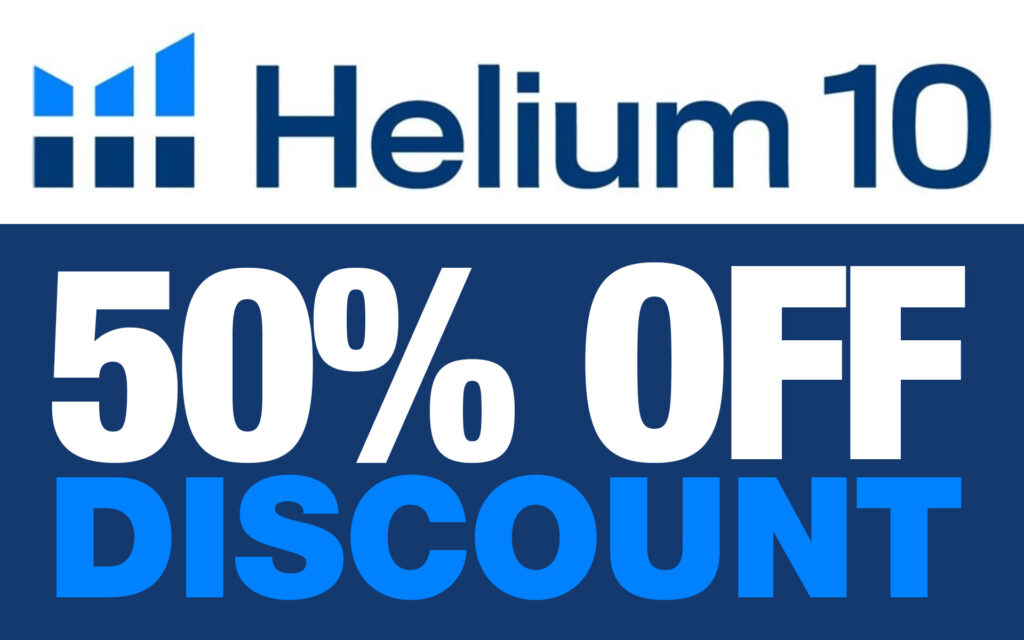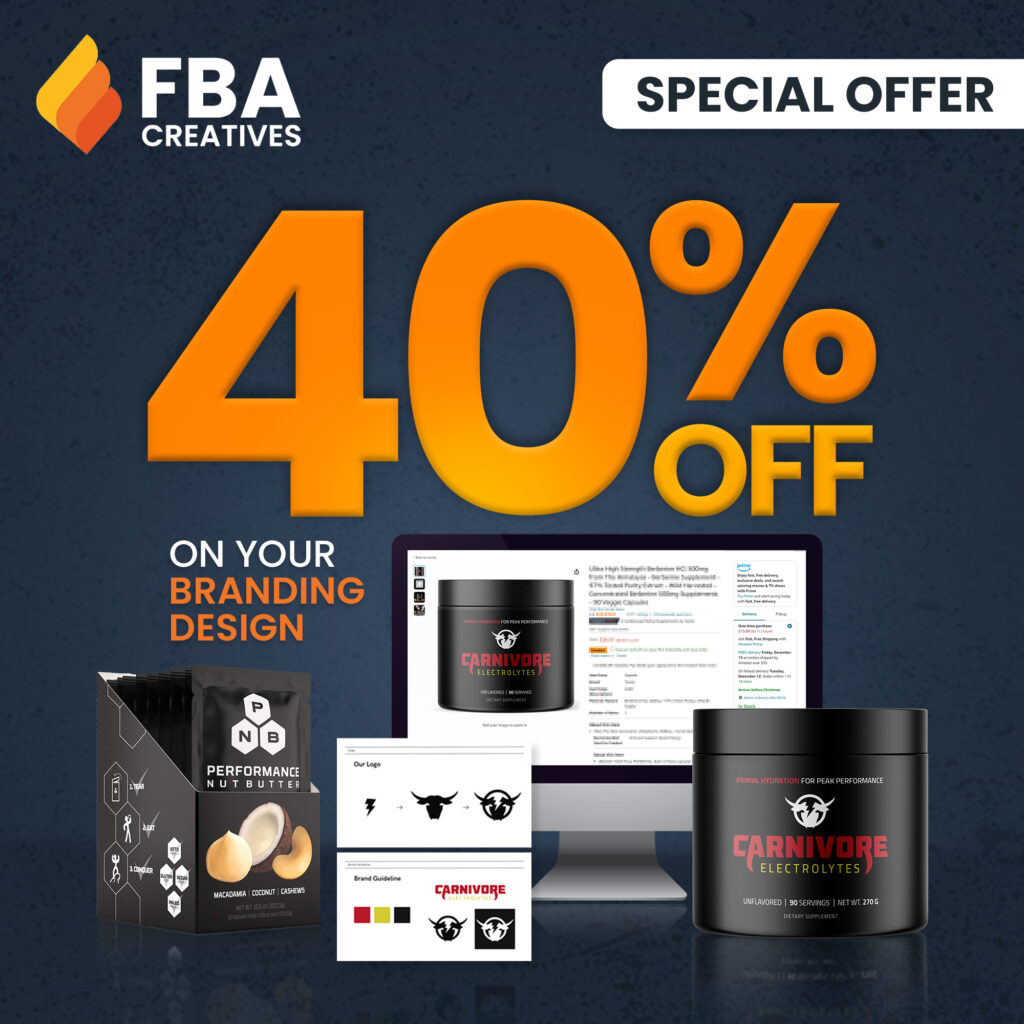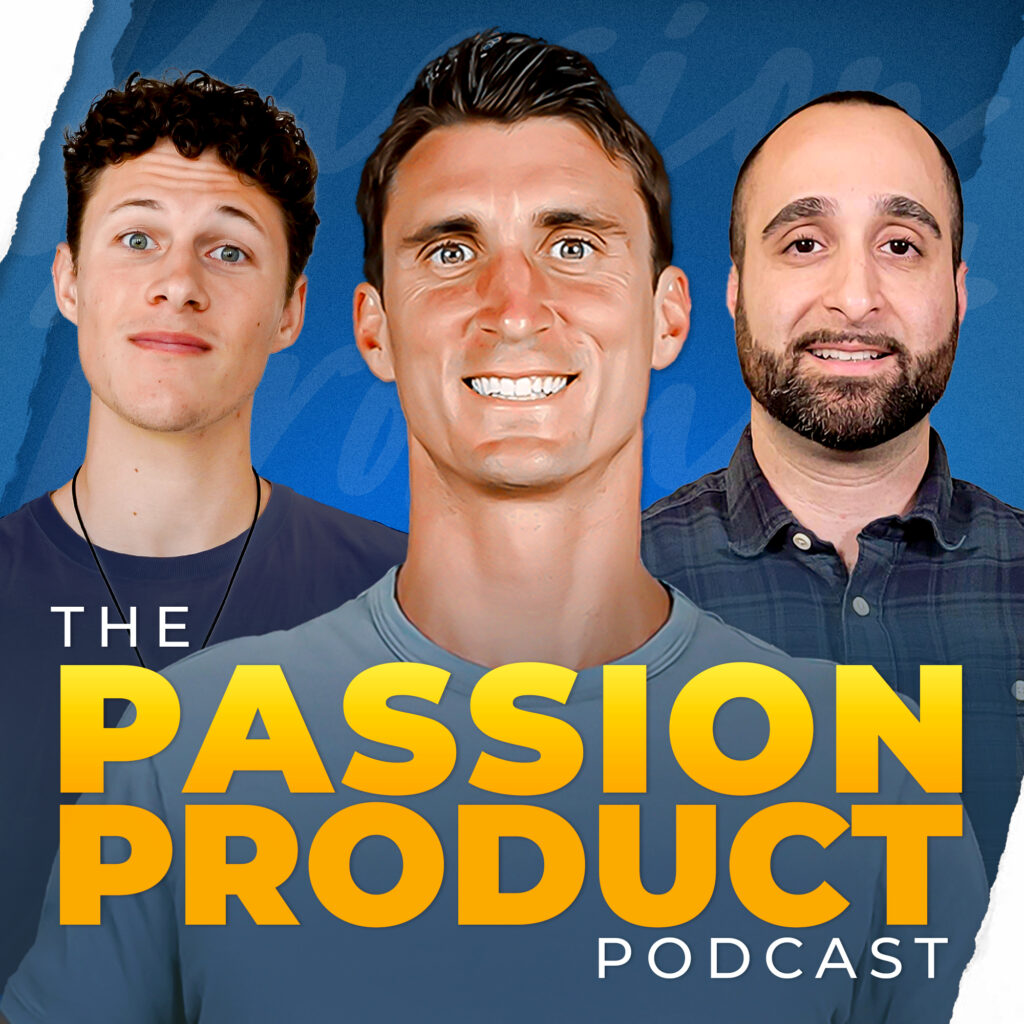Imagine waking up, grabbing your coffee, and within five minutes, discovering a product that could earn over $50,000 per month on Amazon. Sounds unbelievable, right? But this isn’t a pipe dream—it’s a reality when you use the right tools and follow a proven system like the Passion Product Formula.
In this article, I’m going to show you exactly how I found a high-performing Amazon product in less time than it takes to make breakfast. But more than that, I’ll walk you through the process so you can replicate it for yourself.
Whether you’re a first-time entrepreneur or a seasoned eCommerce seller, this guide will empower you with a step-by-step method to find winning products and turn them into sustainable income streams. Let’s dive into why Amazon is such a powerful platform—and how you can capitalize on it starting today.
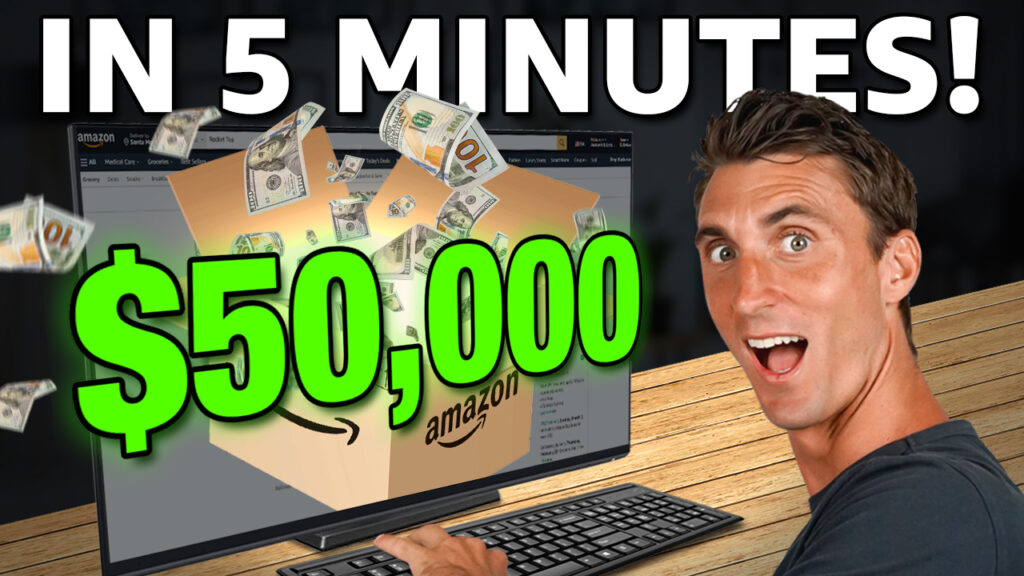
- Why Selling on Amazon is a Golden Opportunity
- Debunking the Myth — Selling Online Isn’t “Hard”
- The 5-Minute Formula: Tools That Do the Heavy Lifting
- Setting the Right Product Criteria from the Start
- Profitable Niches You Should Consider Today
- From Idea to Product: Real-Time Example Breakdown
- The Power of Strong Branding
- Validating Demand Using Keyword Tools
- Finding a Manufacturer Without Guesswork
- Setting Up Your Amazon Seller Account
- Crafting a Winning Product Listing
- Getting Those Crucial First Reviews
- The Passion Product Formula: Build a Brand, Not Just a Product
- Your Next Step: Start Now with Free Tools and Training
- The Real Secret to Amazon Success (It’s You)
- Frequently Asked Questions (FAQs)
Why Selling on Amazon is a Golden Opportunity

The $2 Trillion Marketplace That Levels the Playing Field
Amazon isn’t just an online store; it’s a global e-commerce engine that handles billions of transactions every year. Valued at over $2 trillion, Amazon gives everyday people the opportunity to reach customers worldwide without needing a massive budget or business background.
The beauty of Amazon lies in its accessibility. Small business owners, solopreneurs, and side hustlers are thriving because Amazon brings the traffic and handles logistics. All you need is a product that people want—and as you’ll soon see, finding one isn’t nearly as complicated as you might think.
Real People, Real Success Stories
One of the most powerful things about Amazon is that it levels the playing field. You don’t need to be a multinational corporation to make six or even seven figures. For instance, take a small business selling basic dog treats. This brand has only been around for a couple of years, yet it’s generating close to $300,000 a month in revenue.
These aren’t isolated stories—they’re everyday examples of what’s possible when you combine the Amazon ecosystem with strategic thinking.
Amazon Does the Heavy Lifting
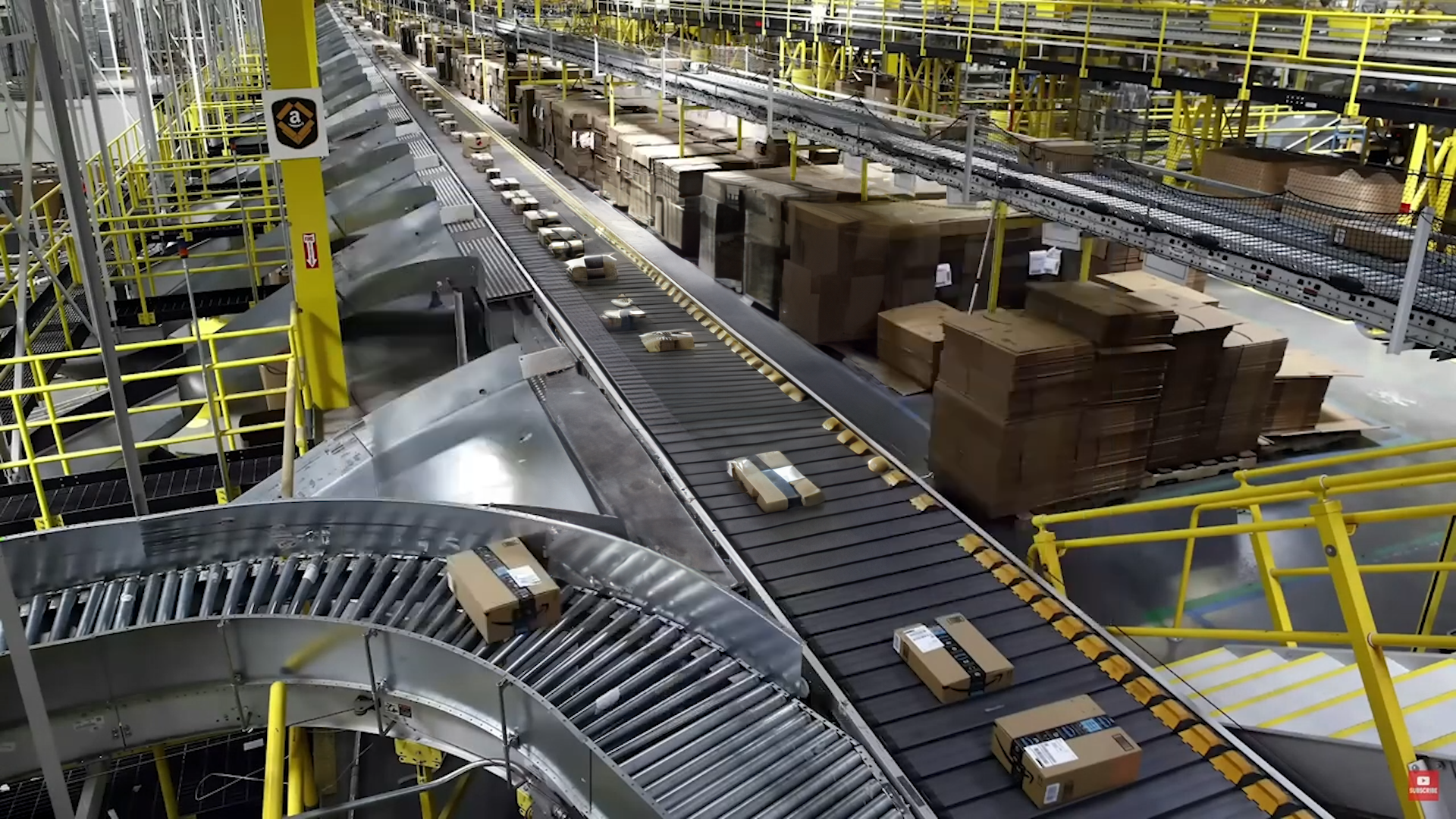
Another reason Amazon is such an ideal platform? They handle the hard stuff. With their Fulfillment by Amazon (FBA) service, you don’t have to pack boxes or worry about customer service. Amazon stores your inventory, ships your products, and even handles returns.
This frees up your time to focus on the fun and creative part—developing products, refining your brand, and engaging with customers. In short, Amazon makes it easier than ever to run a lean, efficient business from anywhere in the world.
Debunking the Myth — Selling Online Isn’t “Hard”
The Misconception That Holds People Back
Let’s face it—many people think starting an online business is overwhelming. They picture a complex maze of tech platforms, marketing jargon, and expensive software. But here’s the truth: selling on Amazon is much simpler than most people realize. The hardest part is often just getting started.
With the right resources and support system, building a profitable Amazon business becomes not only doable but genuinely exciting.
Tools + Systems = Your New Business Advantage
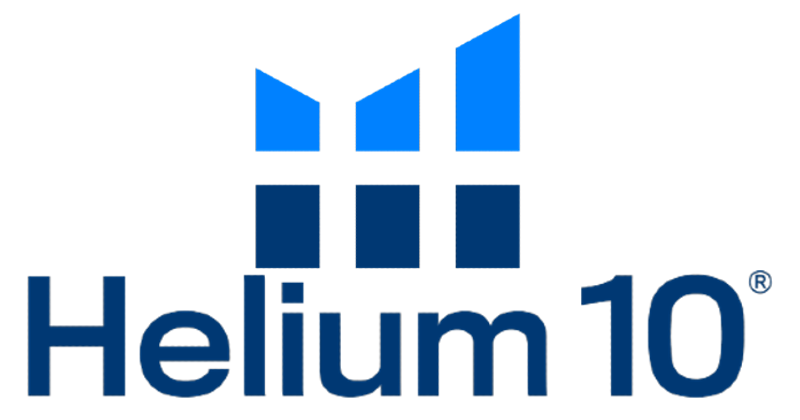
We live in a time where tools like Helium 10 exist to streamline your journey. Instead of guessing what products people want, you can use real-time data to make smart decisions. You don’t have to be an expert coder or an advertising wizard. What you really need is a step-by-step system—and that’s where the Passion Product Formula comes in.
This formula is designed to help you turn something you care about into a product that resonates with a niche audience. It’s not about random fads or chasing trends—it’s about building something meaningful, sustainable, and profitable.
Real-Life Proof That It Works
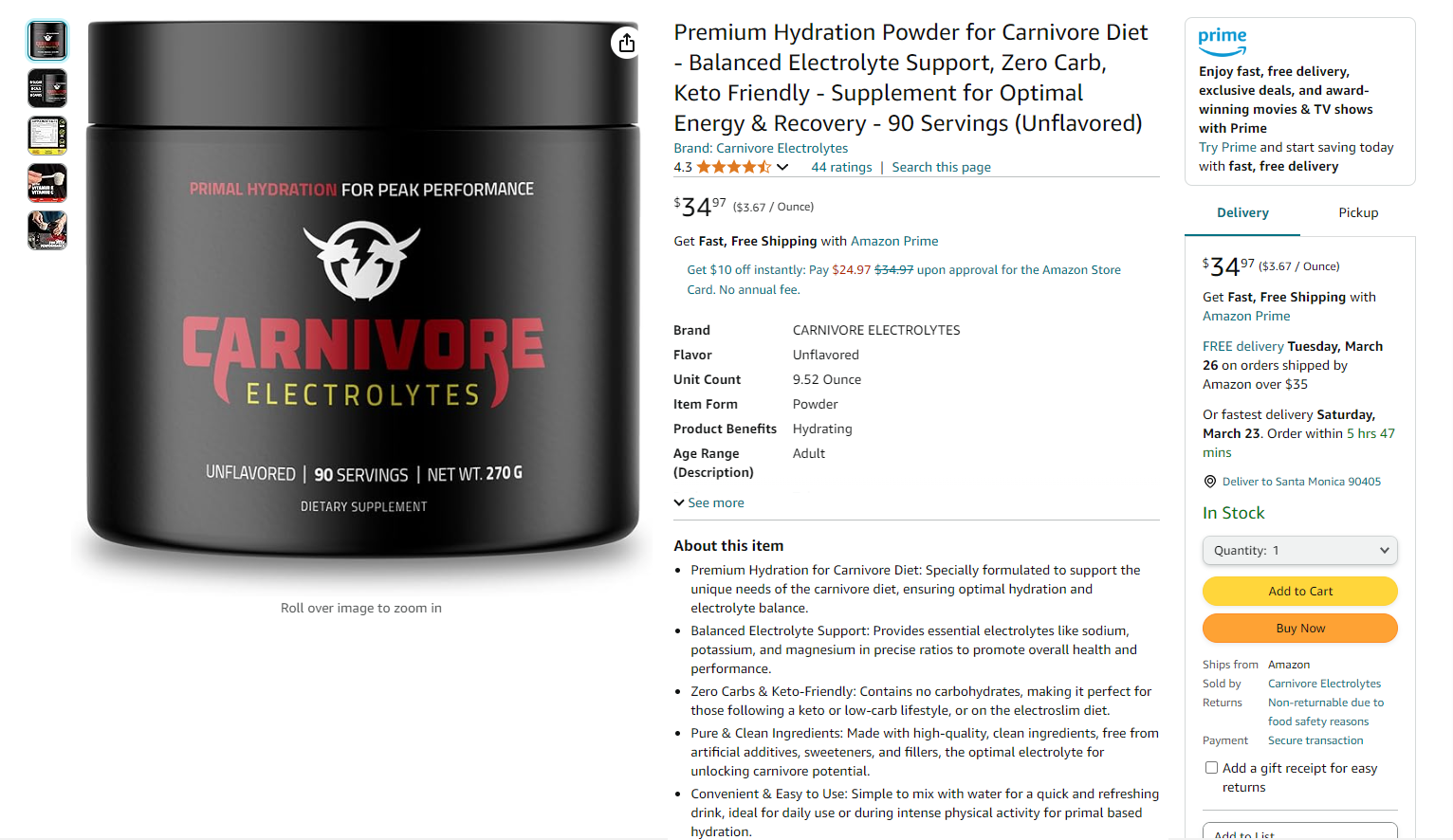
Take my own journey, for example. One of my most successful products is Carnivore Electrolytes, a supplement created specifically for people on the carnivore diet. I used the Passion Product Formula to bring this idea to life, and now it generates about $40,000 in monthly revenue.
I didn’t start with deep pockets or insider connections. I simply followed the process, used the right tools, and stayed consistent. And if I can do it, so can you.
The 5-Minute Formula: Tools That Do the Heavy Lifting
When people hear you can find a high-revenue product in five minutes, their first thought is usually, “Yeah right.” But thanks to tools like Helium 10, it’s not only possible—it’s incredibly straightforward.
Helium 10 is an all-in-one software suite for Amazon sellers. And while I’ve mentioned it briefly in the past, there’s one feature in particular that I rarely talk about: Black Box. It’s essentially a product research tool that filters through thousands of Amazon listings based on specific criteria you set—revealing hidden gems in seconds.
Even better? There’s a free version available. You don’t need to invest upfront to start finding great product opportunities. Simply create a free account, plug in your parameters, and let the software work its magic.
But the real secret sauce isn’t just the tool—it’s how you use it. And that’s where smart criteria come into play.
Setting the Right Product Criteria from the Start
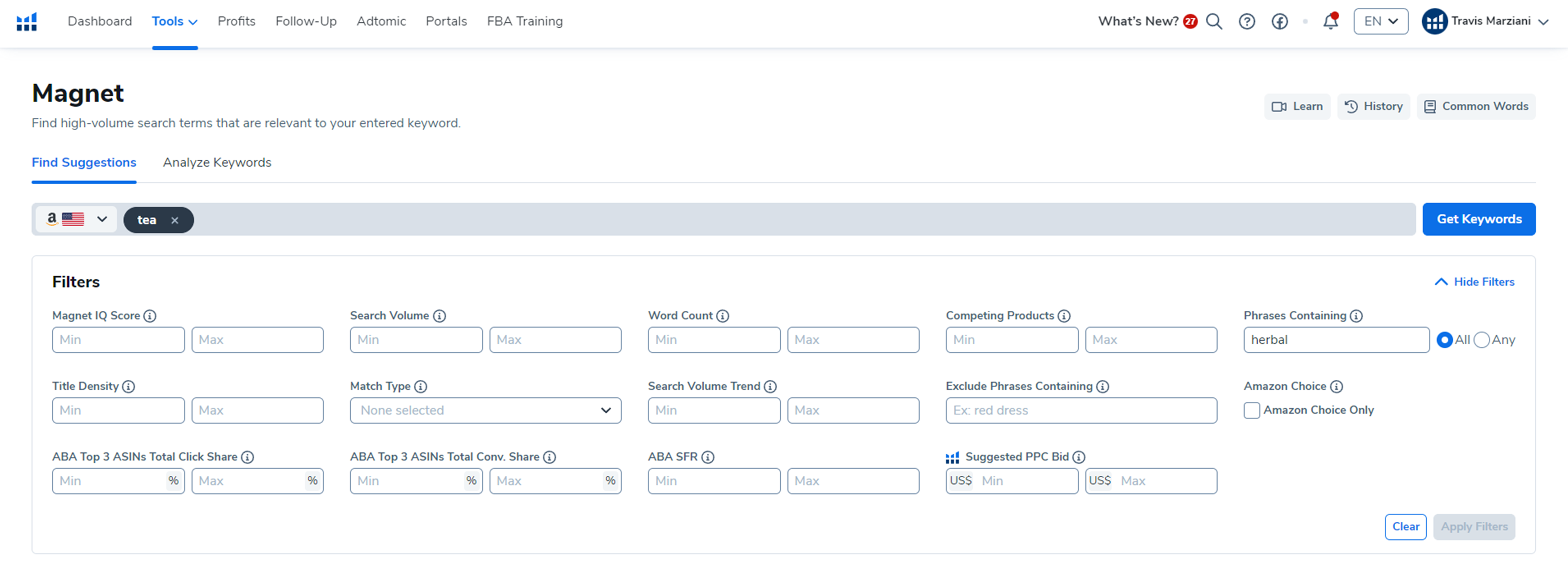
If you want to find profitable, low-competition products, setting the right filters is absolutely essential. Otherwise, you’ll waste time chasing products that are either too saturated or barely profitable.
Here’s the framework I personally use—and recommend—when searching for potential winners on Amazon.
Price Point: $15–$85
First and foremost, your product needs to be priced above $15. Why? Because anything cheaper leaves very little room for profit after Amazon takes its cut. Between the 15% referral fee, FBA fees (which typically range from $2 to $5), and product costs, your margin can vanish quickly.
On the other hand, if your product is priced over $85, you risk scaring away potential buyers. Higher-priced products also come with greater expectations, more returns, and often more customer service headaches.
The sweet spot? Somewhere between $25 and $45. That range offers healthy margins and aligns with impulse buying behavior on Amazon.
Monthly Revenue: At Least $30,000
It’s easy to dream big—but we need to anchor that dream in solid numbers. A good benchmark is to look for products already making at least $30,000 in monthly revenue. That equates to about $360,000 per year. Even after subtracting costs, you’re still looking at six-figure profit potential.
This ensures that the product has demand and isn’t a one-hit wonder. If something is already making that much with mediocre branding or subpar reviews, imagine what you could do by improving it.
Weight: One Pound or Less
This might sound like a small detail, but it can make a huge difference. Lightweight products are cheaper to manufacture, store, and ship. And with Amazon’s FBA fee structure, anything over a pound can quickly eat into your margins.
That’s why I always recommend targeting products that weigh less than one pound—especially when you’re just starting out. It simplifies logistics and lowers risk.
Review Rating: 3 Stars or Below
Here’s a little-known trick: filter for products with three-star reviews or less. Why? Because those products are already selling well despite having mediocre customer feedback. That signals a clear opportunity.
With better branding, improved features, or simply clearer messaging, you can swoop in and capture a chunk of that market share.
Profitable Niches You Should Consider Today
Now that you know how to set your filters, it’s time to decide what types of products to target. While there are countless categories on Amazon, not all niches are created equal. Some attract more loyal buyers, have higher repeat purchase rates, and allow for stronger emotional connections.
Here are some of my all-time favorite niches that consistently outperform.
1. Baby Products
Parents will do just about anything for their children—and that includes spending extra on premium-quality items. Products in the baby niche tend to sell well even at higher price points, and customers are less price-sensitive compared to other categories.
Think baby monitors, organic swaddles, or teething toys with natural materials. If you can offer something that enhances a child’s safety or comfort, you’re already ahead of the game.
2. Pet Supplies
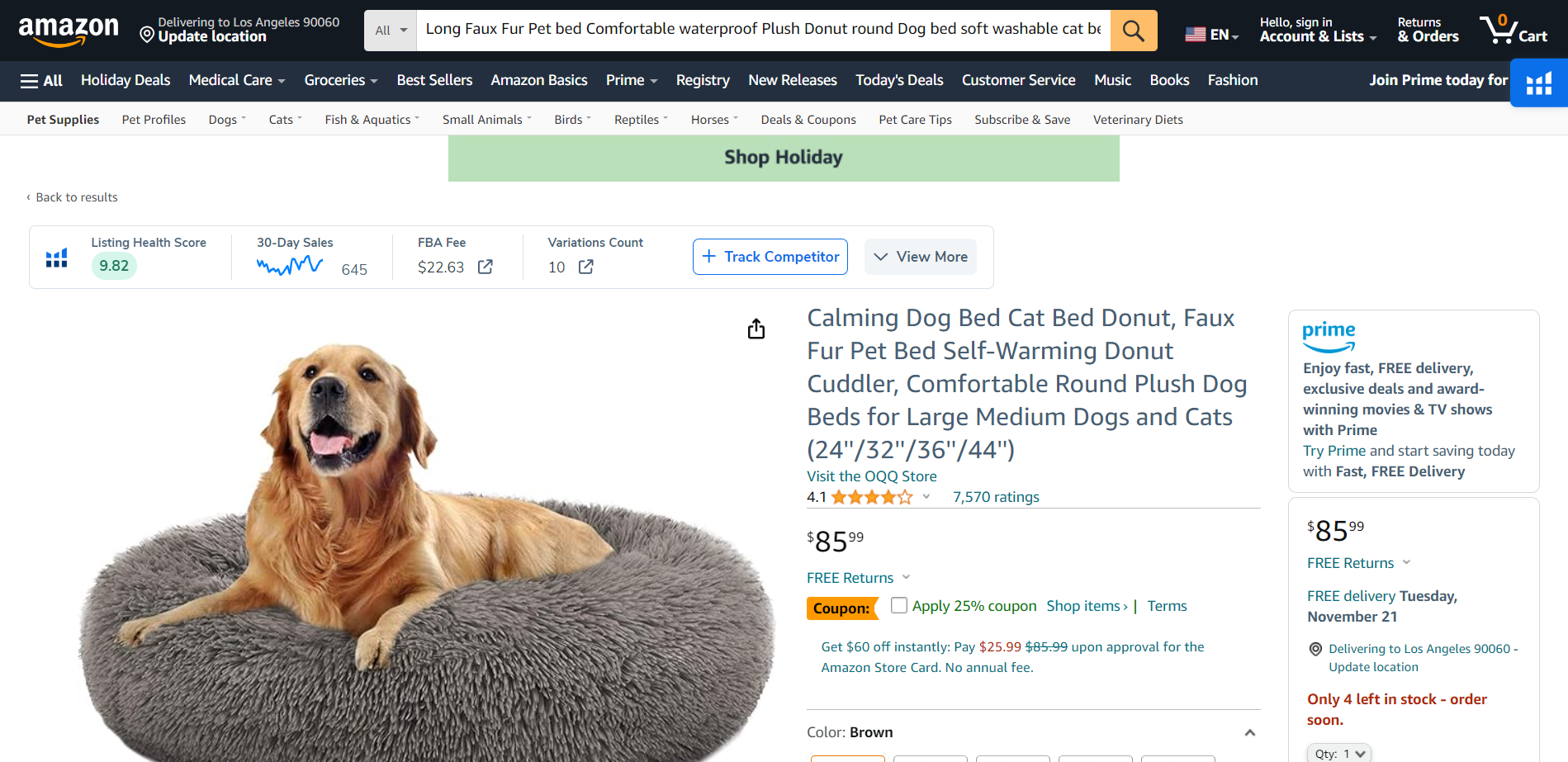
Similar to baby products, the pet industry is booming. Millennials, in particular, are spending more on their pets than ever before—often treating them like family. That means opportunities abound for products like treats, toys, grooming tools, and supplements.
Even better? Many pet products, like food or hygiene items, are consumable—meaning people buy them again and again.
3. Grocery & Gourmet
One of the most exciting categories I’ve ever worked in is Grocery & Gourmet. In fact, my first Passion Product was a nut butter designed for keto and paleo diets. The best part? It was a consumable product with a passionate niche.
When people eat something they love, they reorder. This built-in repeat purchase behavior creates a powerful revenue flywheel. Plus, niche dietary communities (like keto, vegan, or gluten-free) are incredibly loyal once they find a product that fits their needs.
4. Additional Hot Niches
Other niches worth exploring include:
- Health & Household
- Home & Kitchen
- Kitchen & Dining
- Office Products
- Patio, Lawn & Garden
- Sports & Outdoors
- Tools & Home Improvement
- Toys & Games
These categories offer broad appeal, year-round sales, and plenty of sub-niches to explore. By using Helium 10’s filters strategically within these categories, you can quickly uncover untapped opportunities.
From Idea to Product: Real-Time Example Breakdown
Now that you know how to set your product criteria and choose the right niche, let’s bring everything together with a real-world example. This is the exact method I used one morning to uncover a high-potential product that’s currently pulling in over $45,000 a month—despite having just a 3-star review rating and 15 reviews in total.
Yes, you read that correctly.
So, here’s how it played out.
Using Helium 10’s Black Box tool, I entered my preferred filters: price range between $15–$85, revenue minimum of $30,000/month, weight under 1 pound, and a max review rating of 3 stars. Within seconds, a list of under-optimized but high-performing products appeared.
One of them stood out immediately: a dog breath freshener selling for $45 with minimal reviews and still making $45,000 per month. That’s a clear signal that there’s demand—despite customers not being entirely satisfied.
This is where your competitive advantage comes in. If a poorly branded, average-quality product can do $45K a month, imagine what a thoughtfully branded, well-reviewed version could do. That’s the opportunity.

The Power of Strong Branding
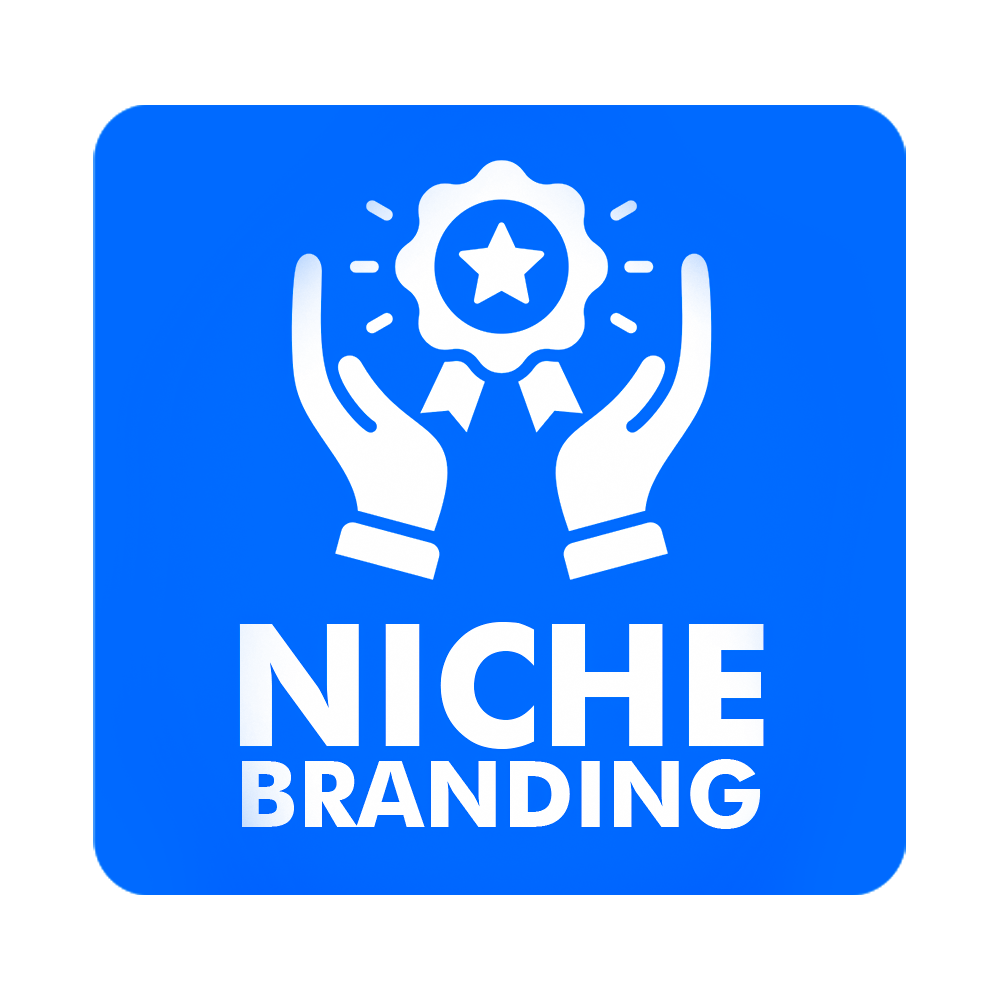
Once you’ve found your product opportunity, the next step is critical—branding. Because on Amazon, branding isn’t just about logos or colors—it’s about standing out and converting browsers into buyers.
Think about it: when customers search for a term like “dog breath freshener,” dozens of listings appear. Your job is to make yours leap off the screen. Unfortunately, most new sellers skip this step. They go with generic packaging, dull images, and uninspired product titles. Don’t be that seller.
So how do you make your product pop?
Make Your Packaging Speak Loudly
Great branding starts with great packaging. One immediate idea I had for the dog breath freshener was to highlight the phrase “Fresh Dog Breath” in large, bold letters and use the color green—commonly associated with freshness and cleanliness. This simple visual cue can trigger a buying impulse.
Why does this work? Because visuals are the first thing shoppers notice. A better image often equals better click-through rates, and that leads to more sales—even before they’ve read a single word of your listing.
Use Professional Help if Needed
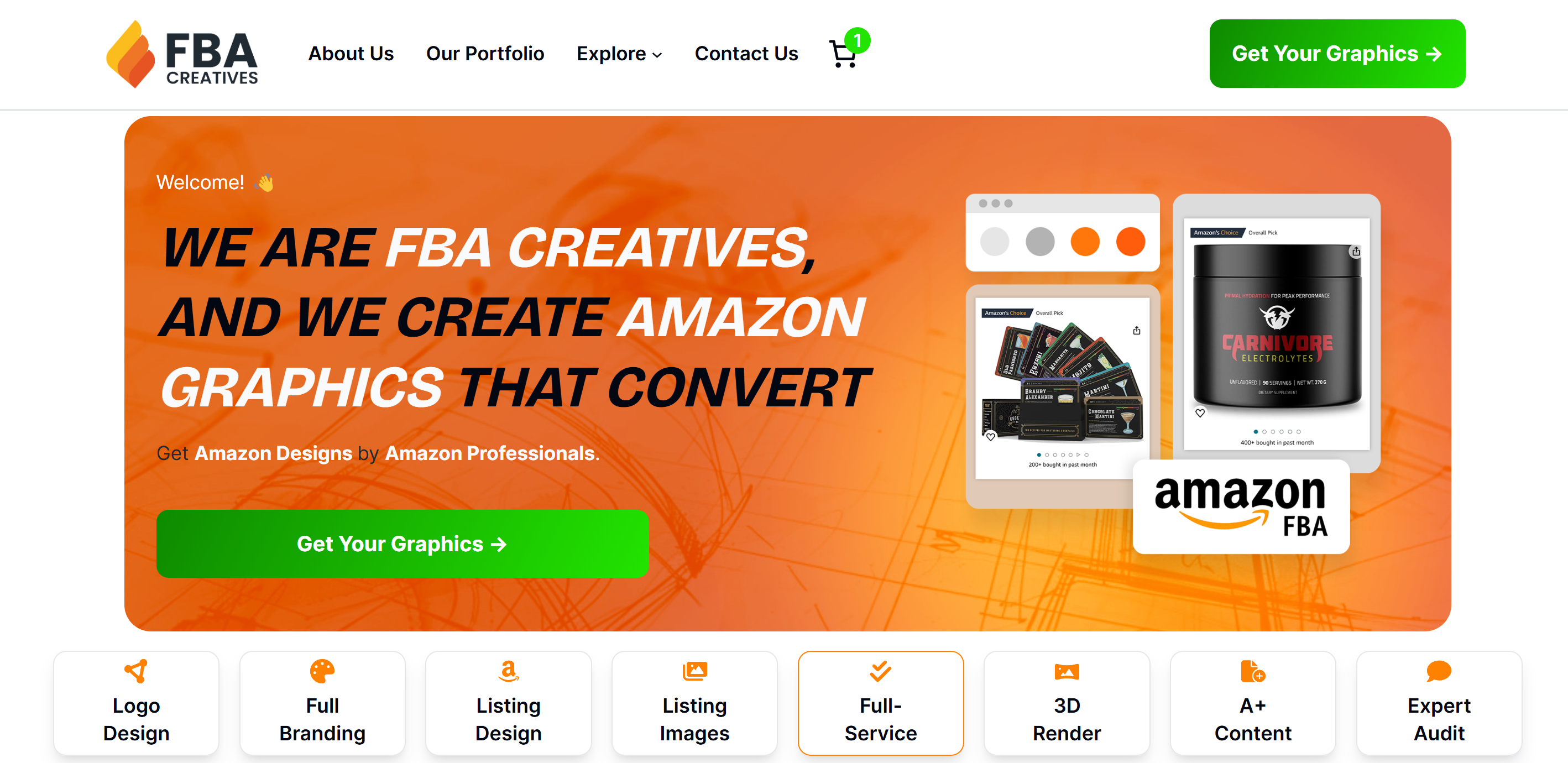
If graphic design isn’t your thing, don’t worry. You don’t have to do it alone. I personally use services like FBA Creatives to create professional branding, packaging, and listing images. A well-designed product often outperforms competitors even if the product itself is nearly identical.
Your brand is your story. It communicates trust, personality, and value—all before the buyer ever clicks “Add to Cart.”
Validating Demand Using Keyword Tools

You’ve found your product and created stellar branding—but before moving forward, you need to make sure there’s actual demand. This is where keyword research tools like Helium 10’s Magnet Tool come into play.
The Magnet Tool helps you uncover how many people are searching for your product each month—and what specific terms they’re using. This data is gold.
In our example, “dog breath freshener” receives over 29,000 monthly searches. That means tens of thousands of people are actively looking for a solution in this niche every single month.
Even better? Most of the current listings aren’t optimized well. This is what we call an underserved market.
When you find a high-volume keyword with lackluster competition, you’ve essentially found a gap in the market—and gaps are where successful brands are born.
Leverage Keywords for Product Titles and Listings
Once you’ve identified the top keywords, be sure to include them naturally in your product title, bullet points, and product description. This not only improves your visibility in Amazon search results but also increases your conversion rate by speaking the customer’s language.
It’s not just about getting found—it’s about resonating once you are found.
Finding a Manufacturer Without Guesswork
Once you’ve validated your product idea and confirmed there’s demand, it’s time to make that idea real. That means finding a manufacturer who can bring your vision to life.
This step might seem intimidating at first, but don’t worry—it’s easier than ever thanks to the tools and platforms available today.
Domestic vs. Overseas: What’s Best for Your Product?
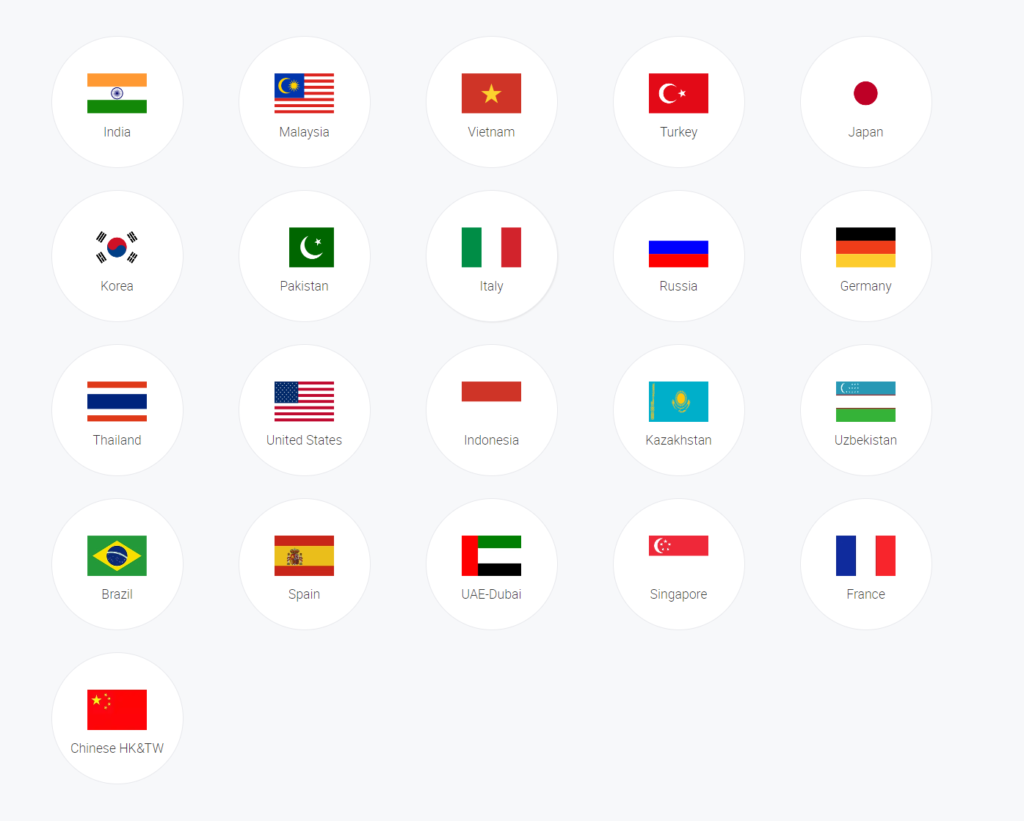
Start by asking yourself: should I manufacture my product locally or overseas?
If you’re creating a consumable product—something that people eat or apply to their body—it’s often safer and faster to manufacture in the U.S. In our dog breath freshener example, a U.S.-based pet product manufacturer could help you meet health regulations and maintain product quality.
On the other hand, if you’re producing non-consumables—like flashcards, gadgets, or kitchen accessories—overseas options like Alibaba.com offer massive cost advantages.
How to Find U.S. Manufacturers
A simple Google search for “[your product] manufacturer USA” can reveal a long list of potential partners. Take your time browsing, and don’t be afraid to get on the phone. One of the biggest tips I can give you: call them. You’ll learn more in a five-minute phone conversation than in hours of emailing.
Additionally, many manufacturers offer end-to-end services, including research, design, and even packaging.
Alibaba for Overseas Sourcing
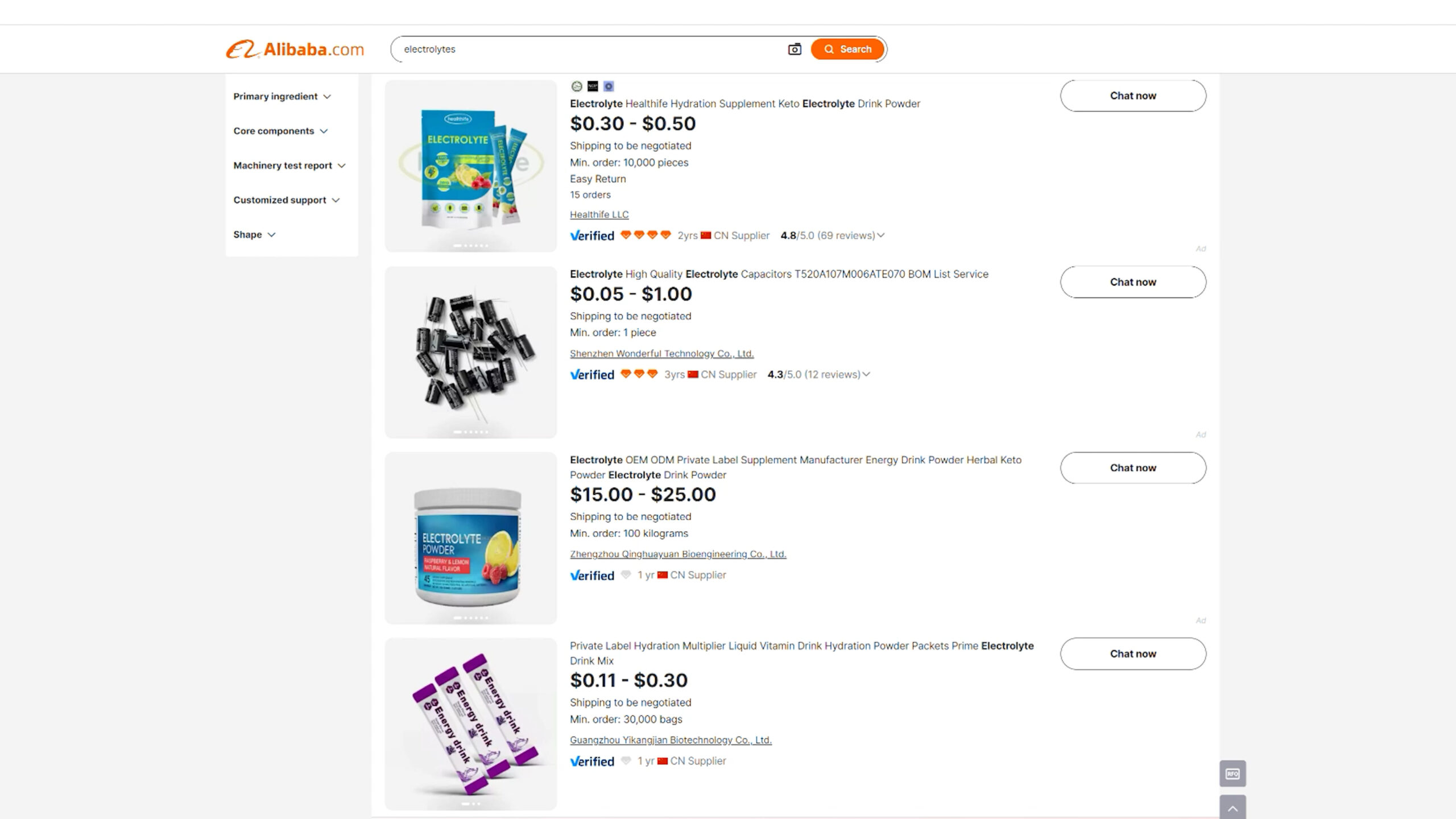
If you’re looking for manufacturers overseas, Alibaba is your go-to platform. Type in your product (e.g., “dog breath freshener”), and you’ll get a long list of suppliers.
Here’s how to protect yourself and ensure quality:
- Look for “Verified Suppliers”: These companies have been physically inspected by Alibaba.
- Use Trade Assurance: This protects your payment and guarantees product delivery.
- Always request samples before placing a large order.
Whether you’re sourcing locally or abroad, take your time to find a partner who aligns with your quality, budget, and timeline goals. This is the foundation of your business—so choose wisely.
Setting Up Your Amazon Seller Account
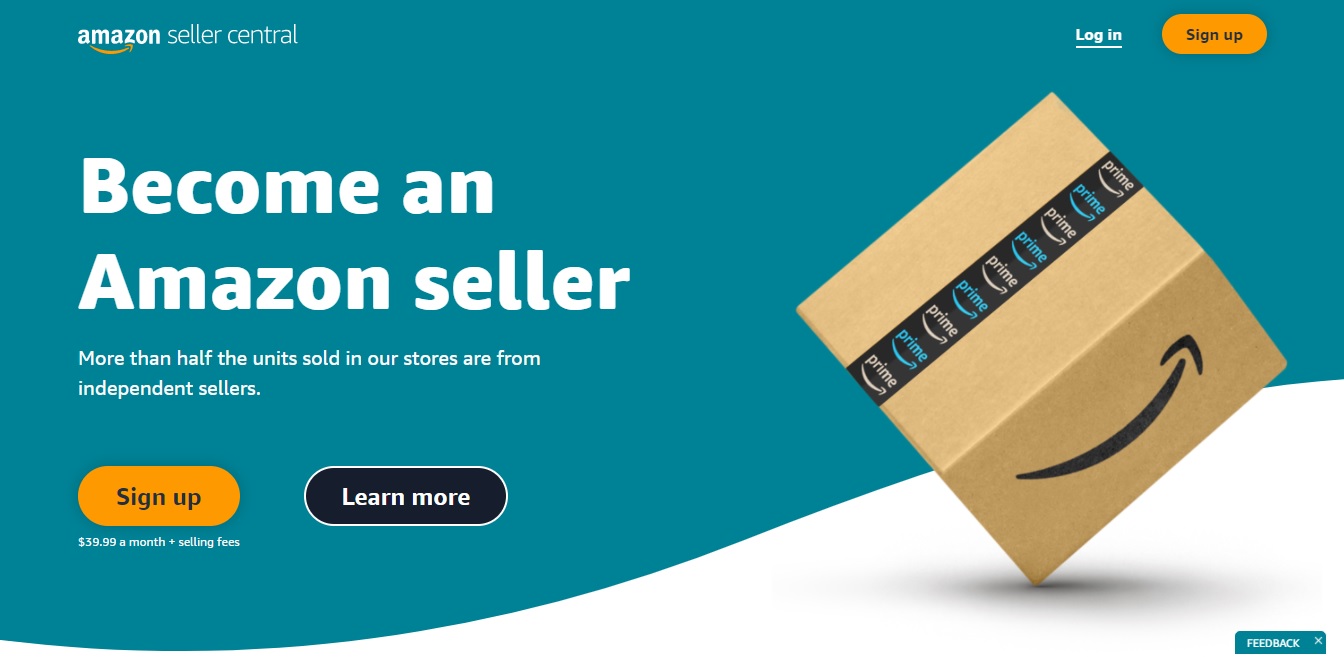
Once you’ve found your manufacturer and your product is in development, it’s time to set up your Amazon Seller account. This process is surprisingly simple and can be completed in under an hour.
Step-by-Step to Open Your Account
- Go to sell.amazon.com
- Click “Sign up” and follow the instructions
- Enter your business information (or use your personal info)
- Add banking details and a valid ID for verification
You can sign up as an individual or a business. If you’re just testing the waters, an individual account might work. But if you’re serious about scaling, forming an LLC is the better option. It adds legitimacy and separates your personal assets from your business operations.
Even if you’re outside the U.S., platforms like WregAgent.com help you create a U.S. entity and get your Amazon account up and running quickly.
Tips for a Smooth Setup
- Use an email address you check frequently.
- Have a valid form of ID and utility bill ready.
- Create a business bank account early on for smoother transactions.
Once your account is active, you’re ready to list your product. And that brings us to one of the most exciting parts—your Amazon product listing.
Crafting a Winning Product Listing

Your listing is your storefront. It’s where you tell your product’s story, attract attention, and convert visitors into customers. And it’s not just about listing the product—it’s about selling the experience.
Let’s break down what makes a high-converting Amazon product page.
Start With an Eye-Catching Title
Your product title should be clear, keyword-optimized, and benefit-driven. Make sure to include the primary keyword your audience is searching for (e.g., “Dog Breath Freshener”) but avoid stuffing it unnaturally.
Example:
“FreshPaws Dog Breath Freshener – Natural Formula for Cleaner Teeth & Fresher Breath – 60 Chews”
Create Powerful Bullet Points
Your bullet points should highlight the top five benefits of your product—not just the features.
Think:
- Eliminates bad breath in just days
- Veterinarian-approved natural formula
- Soft chews your pet will actually love
- Safe for daily use with no artificial additives
- Proudly made in the USA
Notice how each bullet answers a pain point or enhances appeal? That’s intentional. Your copy should solve problems and build trust.
Use High-Quality Images (and Video, if Possible)

Invest in clear, high-resolution images that showcase your product from multiple angles. Lifestyle shots (e.g., a happy dog chewing the treat) are especially effective. If you can, include a short video that explains your product’s benefits—this increases conversions dramatically.
Include a Compelling Description
Your product description allows you to expand on what your product does and why it’s different. Use persuasive language, storytelling, and clear formatting. Amazon shoppers often skim, so make it easy to read with short paragraphs and bold highlights.
Getting Those Crucial First Reviews
Once your listing is live, the next mission is clear: get those first few reviews as quickly as possible. Why? Because reviews are the social proof that drives trust, conversions, and long-term success on Amazon.
Even with the perfect product and listing, shoppers are hesitant to buy if there are no reviews. The good news? There are ethical and effective ways to kickstart that review engine.
Leverage Your Network and Communities
If you have friends, family, or colleagues who fit your target audience, encourage them to buy and review the product—honestly and transparently. While Amazon frowns on incentivized reviews, they allow real customers to share real experiences. Just be sure the reviews are authentic and compliant.
Join Seller Support Communities
This is where the Passion Product community really shines. If you’re part of a program or course, you may already have access to Facebook groups or forums where fellow sellers support each other’s launches.
Here’s how it works: when you launch, you share your product with the group. Others can buy it and leave reviews, and in return, you support their launches. It’s a win-win, and more importantly, it creates momentum that tells Amazon, “This product is worth showing.”
Deliver a 5-Star Experience
Of course, the best way to earn glowing reviews is to deliver a top-tier product and customer experience. Communicate clearly, ship on time, and ensure your product meets expectations—or better yet, exceeds them. Adding a thoughtful insert or follow-up email can also enhance the customer journey.
The Passion Product Formula: Build a Brand, Not Just a Product
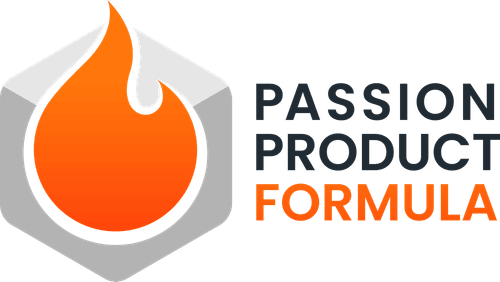
Here’s where everything comes together. Finding a winning product is one thing—but building a lasting, meaningful brand? That’s what separates one-hit wonders from six-figure Amazon sellers.
The Passion Product Formula is all about turning your unique interests, values, and insights into a product that resonates deeply with a niche market. It’s not about chasing trends. It’s about solving real problems for people who share your passion.
What Is a Passion Product?
A passion product is a physical item that:
- Solves a problem you genuinely care about
- Speaks directly to a specific audience or lifestyle
- Reflects your personal story, identity, or experience
For example, if you follow a specific diet (like keto or paleo), you could create a gourmet snack tailored to that audience. If you’re a dog lover, you could develop health-focused pet treats or grooming products. When your product aligns with your lifestyle, your authenticity becomes a marketing asset.
Why Passion Beats Generic Every Time
Products born from passion tend to outperform generic competitors for several reasons:
- You understand the customer better than a big-box brand ever could.
- You care about quality and details that others overlook.
- You’re motivated to iterate, improve, and grow—because it’s personal.
Passion also fuels your content, branding, and outreach. People connect with stories, not specs. When your product reflects your beliefs, it builds emotional loyalty that competitors can’t copy.
Your Next Step: Start Now with Free Tools and Training
You’ve just learned how to find a $50K/month product on Amazon in five minutes, how to vet it, brand it, source it, and launch it. So, what now?
The next step is simple: take action. Whether that means signing up for Helium 10’s free tools or diving into your first product search, momentum is your best friend.
To help you get started, here are a few resources I highly recommend:
- Helium 10: Sign up for a free account and start using Black Box and Magnet today. These tools alone can change the way you think about product research.
- The Passion Product Formula Program: If you want a step-by-step system (plus a supportive community), this is the ultimate shortcut to building a brand you’re proud of.
- The Free 10-Hour Amazon FBA Course: If you’re still deciding whether to commit fully, this free course offers incredible value. It covers everything in detail—from product ideas to setting up your account and optimizing listings.
Remember, you don’t have to have it all figured out. The key is to start with one small step today, and let the process guide you forward.
The Real Secret to Amazon Success (It’s You)
At the end of the day, tools, strategies, and formulas are important—but the real differentiator is you. Your unique ideas, passions, and perspective are what will set your product apart and turn it into something truly special.
You don’t need a background in eCommerce. You don’t need a massive budget. You just need a willingness to learn, take action, and trust the process.
Amazon is one of the greatest opportunities of our time. And with the Passion Product Formula, you’re not just chasing profits—you’re building a brand that matters.
So, are you ready to find your passion product?
Start your journey today. You’ve got everything you need.
Frequently Asked Questions (FAQs)
1. Do I need a lot of money to start selling on Amazon?
Not at all. Many sellers start with a budget of $500–$2,000. Tools like Helium 10 have free versions, and you can source products cost-effectively once you know what you’re doing.
2. What is a Passion Product, and why is it better than a random trending item?
A Passion Product is a physical product tied to something you personally care about. It serves a specific audience and creates emotional connection, which leads to better branding, more loyalty, and long-term success.
3. Is Amazon FBA really passive income?
While there’s upfront effort involved—especially with product research and branding—Amazon FBA can become semi-passive once systems are in place. With Amazon handling fulfillment and tools automating tasks, it’s possible to scale without constant involvement.
4. How long does it take to launch a product?
The typical timeline is 6–12 weeks from idea to launch. That includes researching the product, sourcing a manufacturer, designing packaging, and setting up your listing. The more focused you are, the faster it goes.
5. What if I’m not in the United States? Can I still sell on Amazon?
Yes! Amazon welcomes international sellers. You can create a U.S. business entity using services like WregAgent.com, and many third-party logistics companies help non-U.S. sellers store and ship products locally.


